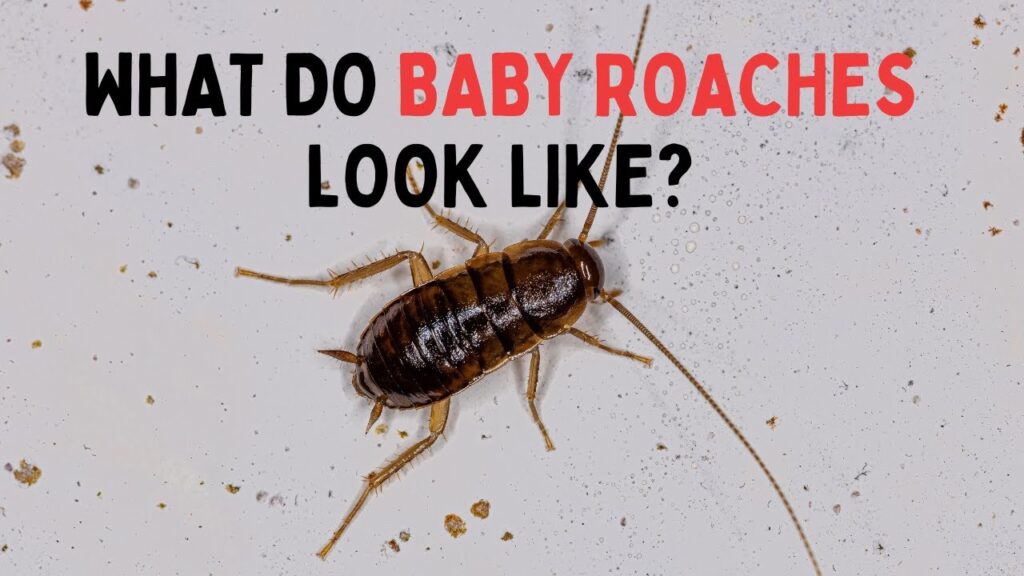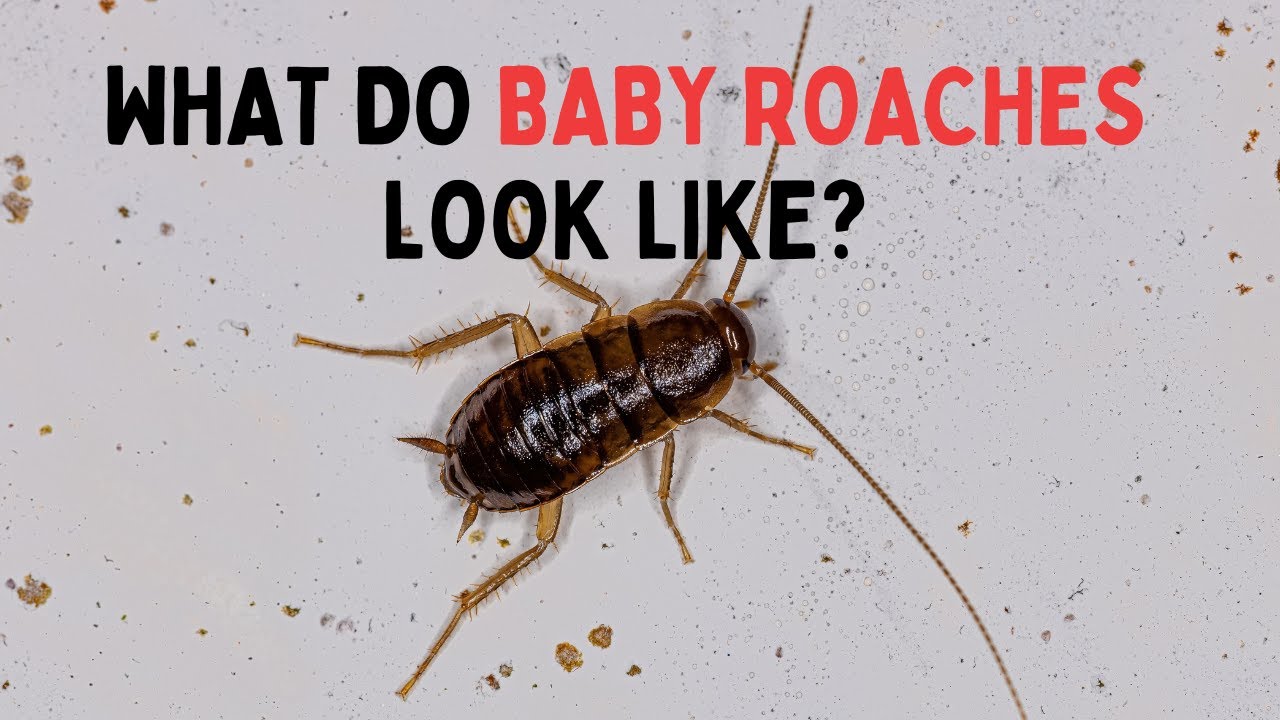
Baby Sewer Roach: Understanding the Threat and Prevention Strategies
The term “baby sewer roach” can evoke a visceral reaction, conjuring images of unsanitary conditions and potential health hazards. While technically not a distinct species, “baby sewer roach” typically refers to the nymph stage of various cockroach species that thrive in sewer environments. These pests are not only unsightly but can also pose significant risks to human health and property. Understanding what these insects are, the dangers they present, and how to effectively prevent and eliminate them is crucial for maintaining a healthy and safe living environment. This article delves into the world of the baby sewer roach, providing comprehensive insights and practical solutions.
What Exactly is a Baby Sewer Roach?
The term “baby sewer roach” isn’t a scientific classification but a colloquial term often used to describe the nymph stage of cockroaches commonly found in sewer systems. These nymphs resemble smaller versions of adult cockroaches, often lighter in color and lacking fully developed wings. Common species contributing to this “baby sewer roach” population include:
- American Cockroach (Periplaneta americana): One of the largest cockroach species, often found in sewers and drains.
- Oriental Cockroach (Blatta orientalis): Also known as the “water bug,” these cockroaches prefer damp, cool environments like sewers.
- German Cockroach (Blattella germanica): While more commonly found indoors, they can also inhabit sewer systems, especially in warmer climates.
These cockroaches seek refuge and breeding grounds in sewers due to the consistent moisture, warmth, and readily available food sources (organic matter and waste). The “baby sewer roach” stage is a critical part of their life cycle, as nymphs undergo several molts before reaching adulthood.
The Dangers Posed by Baby Sewer Roaches
The presence of baby sewer roaches, and cockroaches in general, is more than just a nuisance. They can pose several significant health and hygiene risks:
Disease Transmission
Cockroaches are known carriers of various pathogens. They can pick up bacteria, viruses, and parasites while crawling through sewers and other unsanitary environments. These pathogens can then be transmitted to humans through contaminated food, surfaces, or even through their droppings. Some of the diseases associated with cockroaches include:
- Salmonellosis: A bacterial infection that causes diarrhea, fever, and abdominal cramps.
- Dysentery: An infection of the intestines that causes severe diarrhea with blood or mucus.
- Gastroenteritis: Inflammation of the stomach and intestines, leading to vomiting and diarrhea.
- Typhoid Fever: A bacterial infection that causes high fever, headache, and abdominal pain.
Allergies and Asthma
Cockroach allergens are a common trigger for allergies and asthma, particularly in children. These allergens are found in cockroach saliva, droppings, and body parts. Exposure to these allergens can lead to:
- Allergic Rhinitis: Symptoms include sneezing, runny nose, and itchy eyes.
- Asthma: Symptoms include wheezing, coughing, and shortness of breath.
- Skin Rashes: Cockroach allergens can also cause skin irritation and rashes.
Contamination of Food and Surfaces
Cockroaches contaminate food and surfaces by leaving behind droppings, saliva, and shed skin. This contamination can lead to the spread of pathogens and allergens, making food unsafe to eat and surfaces unsanitary to touch. The presence of even a few baby sewer roaches suggests a larger infestation and a higher risk of contamination.
Property Damage
While not as destructive as termites, cockroaches can still cause damage to property. They can chew through paper, cardboard, and fabric, damaging books, documents, and clothing. They can also contaminate food storage areas and appliances, leading to costly repairs or replacements.
Identifying a Baby Sewer Roach Infestation
Early detection is key to preventing a full-blown cockroach infestation. Here are some signs that you may have a baby sewer roach problem:
- Sightings: Spotting small, light-colored cockroaches, especially in damp areas like bathrooms, kitchens, and basements.
- Droppings: Finding small, dark, cylindrical droppings that resemble coffee grounds or pepper.
- Odor: A musty, unpleasant odor that becomes more noticeable as the infestation grows.
- Egg Casings (Oothecae): Discovering small, brown or black egg casings in hidden areas.
- Smear Marks: Seeing dark, irregular smear marks on walls or floors, especially in areas where cockroaches travel.
If you notice any of these signs, it’s important to take action immediately to address the problem.
Effective Prevention Strategies
Preventing a baby sewer roach infestation is often easier and more cost-effective than dealing with an existing one. Here are some key prevention strategies:
Seal Entry Points
Cockroaches can enter your home through cracks, crevices, and gaps in walls, floors, and around pipes. Seal these entry points with caulk or sealant to prevent cockroaches from getting inside. Pay close attention to areas where pipes enter the building, as these are common entry points for sewer-dwelling roaches.
Maintain Cleanliness
Cockroaches are attracted to food and water. Keep your home clean and free of food debris. Clean up spills immediately, store food in airtight containers, and regularly clean under appliances and furniture. Empty trash cans frequently and keep them covered.
Reduce Moisture
Cockroaches thrive in damp environments. Fix leaky pipes and faucets, and ensure proper ventilation in bathrooms and kitchens. Use a dehumidifier in damp basements or crawl spaces to reduce moisture levels.
Maintain Your Yard
Keep your yard clean and free of debris, such as piles of leaves, wood, and trash. These areas can provide shelter and breeding grounds for cockroaches. Trim shrubs and bushes away from your home to reduce hiding places.
Regular Inspections
Conduct regular inspections of your home to look for signs of cockroach activity. Pay close attention to areas where cockroaches are likely to hide, such as under sinks, behind appliances, and in dark corners.
Effective Elimination Methods
If you already have a baby sewer roach infestation, there are several methods you can use to eliminate them. The best approach will depend on the severity of the infestation and your personal preferences.
Baits
Cockroach baits are a popular and effective method for controlling cockroach populations. These baits contain an insecticide mixed with a food attractant. Cockroaches eat the bait and then carry it back to their nests, where they share it with other cockroaches. This can lead to the elimination of the entire colony. Look for baits specifically designed for cockroach control and place them in areas where you have seen cockroach activity. [See also: Best Roach Baits for Home Use]
Insecticides
Insecticides can be used to kill cockroaches on contact. These products come in various forms, including sprays, dusts, and aerosols. When using insecticides, follow the instructions carefully and take precautions to protect yourself and your family. Avoid spraying insecticides directly on food or food preparation surfaces. Insecticide dusts can be applied to cracks and crevices where cockroaches are likely to hide. [See also: Safe Insecticide Application Techniques]
Traps
Cockroach traps are another option for controlling cockroach populations. These traps typically contain a sticky surface that captures cockroaches as they crawl inside. Traps are most effective for monitoring cockroach activity and catching small numbers of cockroaches. They are less effective for eliminating large infestations. [See also: DIY Roach Traps]
Professional Pest Control
For severe or persistent cockroach infestations, it may be necessary to hire a professional pest control company. These companies have the expertise and equipment to effectively eliminate cockroaches and prevent future infestations. They can also identify and address the underlying causes of the infestation, such as structural problems or sanitation issues. [See also: Finding a Reputable Pest Control Service]
Addressing Sewer Line Issues
Since “baby sewer roaches” originate in sewer systems, addressing problems directly within the sewer lines can be crucial. Leaks, cracks, or breaks in sewer pipes can provide cockroaches with easy access to your home. Regular maintenance and inspections of your sewer lines can help identify and address these issues before they lead to an infestation. Consider these actions:
- Sewer Line Inspection: Have a professional plumber inspect your sewer lines using a camera to identify any cracks, leaks, or blockages.
- Sewer Line Repair: Repair any damaged sections of your sewer line to prevent cockroaches from entering your home.
- Root Intrusion Prevention: Tree roots can penetrate sewer lines, creating cracks and providing cockroaches with access. Consider using root intrusion prevention methods, such as chemical treatments or physical barriers.
Long-Term Management
Even after eliminating a baby sewer roach infestation, it’s important to take steps to prevent future problems. This includes maintaining good sanitation practices, sealing entry points, and regularly inspecting your home for signs of cockroach activity. Consider these long-term management strategies:
- Ongoing Monitoring: Use cockroach traps to monitor cockroach activity and detect any new infestations early.
- Preventative Treatments: Consider using preventative insecticide treatments to create a barrier against cockroaches.
- Education: Educate your family and neighbors about cockroach prevention strategies to help reduce the risk of infestations in your community.
Conclusion
Dealing with baby sewer roaches can be a challenging and unpleasant experience. However, by understanding the risks they pose, implementing effective prevention strategies, and using appropriate elimination methods, you can protect your home and family from these pests. Remember that a proactive approach is key to preventing infestations and maintaining a healthy and safe living environment. By addressing sewer line issues, maintaining cleanliness, and sealing entry points, you can significantly reduce the risk of cockroach problems. If you suspect a severe infestation, don’t hesitate to contact a professional pest control company for assistance.

